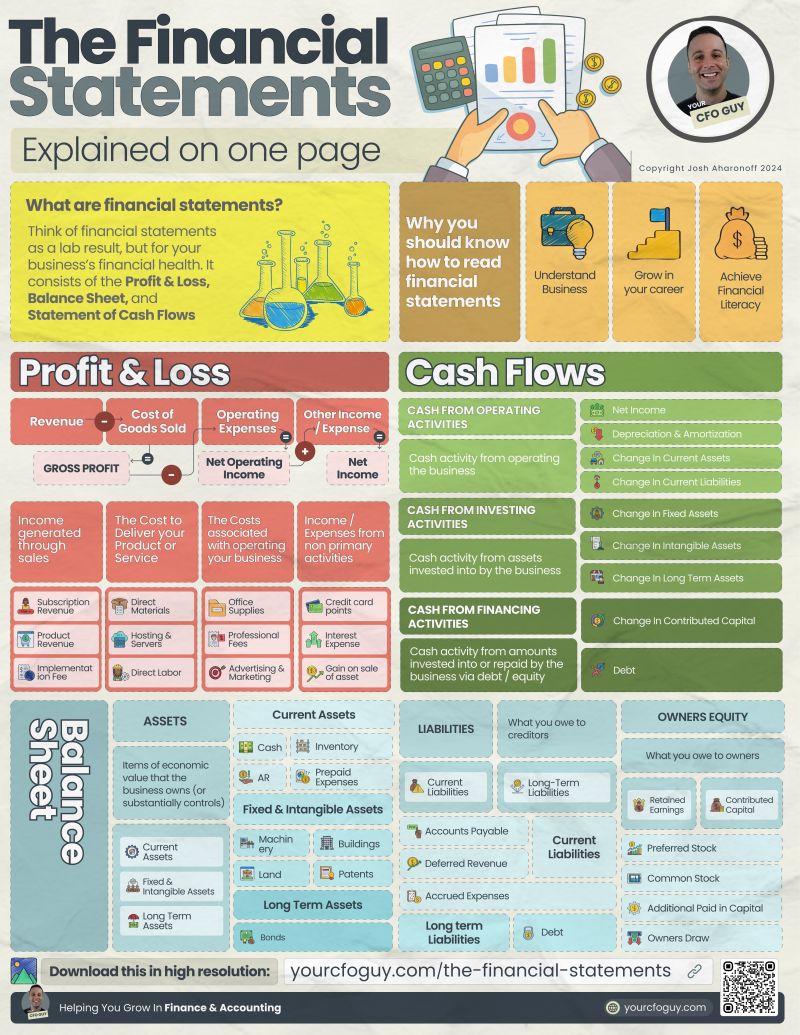The Financial Statements…explained on ONE page
From: www.linkedin.com (Josh Aharonoff, CPA)
It doesn’t matter what industry you are in…
EVERYONE should understand how to read financial statements
When you understand Financial Statements you…
✅ Understand more about business
✅ Can perform your job in Finance & Accounting better
✅ Can build a robust forecast
and so much more
Let’s do a deep dive on how they work
➡️ The Profit & Loss (also known as Income Statement)
This statement is all about telling you about the PERFORMANCE of your company…IE your income, and your costs
Your income is summarized by
1️⃣ Revenue → income related to your core business
2️⃣ Other Income → income related to none core activities (like credit card points)
Your expenses are summarized by:
1️⃣ Cost of Goods Sold → Costs that relate to carrying out your product or service
2️⃣ Operating Expenses → Costs that relate to operating your business
3️⃣ Other Expense → Costs that don’t relate to carrying out your income, or operating your business
From these you get a bunch of profitability metrics such as Gross Profit (Revenue-COGS), Net Operating Income (Gross Profit – Opex), and net income (all income – all expenses
➡️ The Balance Sheet
This statement tells you all about the financial POSITION of your company
it is summarized by:
1️⃣ Assets → Amounts of Economic value that business owns, or substantially controls
2️⃣ Liabilities → Amounts that you owe to creditors
3️⃣ Owners Equity → Amounts that you owe to the owners
The Balance sheet is presented on a cumulative basis, which is the only statement of the 3 that acts this way
➡️ The Statement of Cash Flows
This statement is all about telling you where your cash is going
it is separated by:
1️⃣ Cash from Operating activities → this section relates to cash movements from operating your business
2️⃣ Cash from Investing activities → cash movements from fixed & long term assets (IE, Assets that are invested for long term benefit)
3️⃣ Cash from Financing activities → cash movements from amounts invested by owners, or creditors – both for amounts put in, and amounts repaid
===
I’ve done my best to include everything you need to know about how to read Financial Statements in the graphic below…
but there’s so much more to say.
What would you add?


